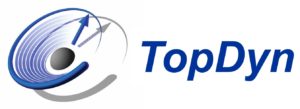

Seminar über die Physik der kondensierten Materie (SFB/TRR173 Spin+X und SFB/TR288 Kolloquium, TopDyn-Seminar)
May 28, 2018 at
2 p.m.
in
MEDIEN-Raum, Staudinger Weg 79, 03-431
Univ-Prof. Dr. Jure Demsar
Univ.-Prof. Dr. Hans-Joachim Elmers
Univ.-Prof. Dr. Mathias Kläui
Univ.-Prof. Dr. Thomas Palberg
New Materials for Nano-Spintronic Devices
Atsufumi Hirohata (Department of Electronic Engineering, University of York)
Spintronics is one of the emerging research fields in nanoelectronics, of which future progress depends on the development of new materials. One of such materials is a half-metallic ferromagnet with 100% spin polarisation at the Fermi level. Here, Heusler alloys have the greatest potential due to their controllable intrinsic magnetisation, high Curie temperature and good lattice matching with common substrates. We have been growing such alloys in their epitaxial and polycrystalline film forms to demonstrate larger activation volume and to achieve over 50% reduction in crystallisation energy by aligning the crystalline plane to be (110). These films have been confirmed to have a bandgap at the Fermi level by infra-red circularly polarised photoexcitation.
These ternary Heusler alloys have a cubic structure, leading to in-plane magnetic anisotropy. However, the in-plane magnetisation is known to be inferior to the perpendicular anisotropy due to their recording/storage density for applications. For further miniaturisation of the spintronic devices, perpendicular anisotropy is therefore necessary, which can be induced by tetragonal distortion by growing the Huesler alloy film on a bcc seed layer with the (110) surface plane [7]. Zero-moment Heusler alloys, such as antiferromagnets [8], have also been developed for the GMR and/or TMR device implementation. Such fast development is unique to the research field of spintronics.
This work has been partially supported by EPSRC (EP/H026126/1, EP/K03278X/1, EP/M02458X/1), Royal Society Industry Fellowship, EU-FP7 HARFIR (NMP3-SL-2013-604398) and JST PRESTO and CREST.